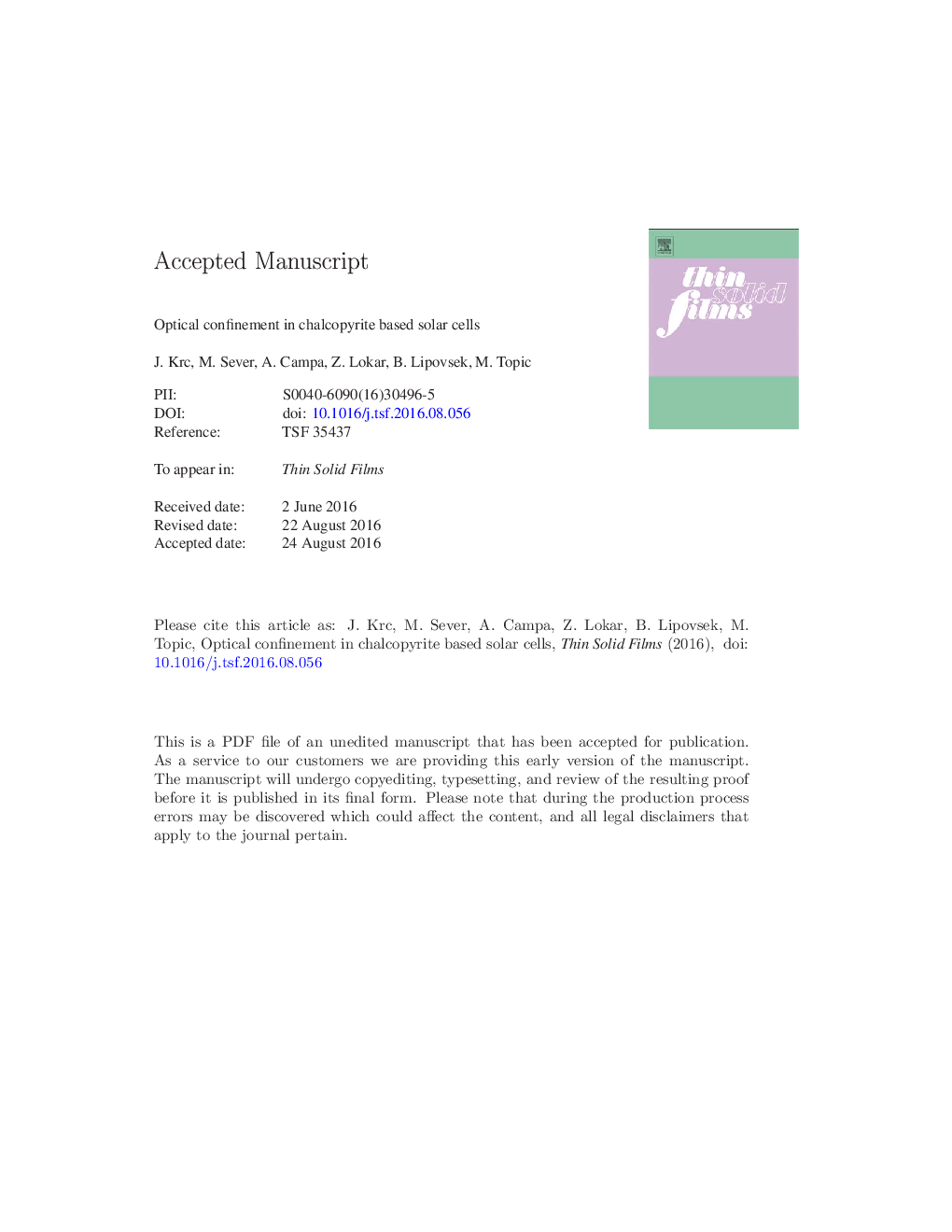| Article ID | Journal | Published Year | Pages | File Type |
|---|---|---|---|---|
| 5465945 | Thin Solid Films | 2017 | 41 Pages |
Abstract
Potential gains in short-circuit current density related to improvements in optical confinement in chalcopyrite based solar cells are studied and quantified by means of optical simulations. In the first part idealised optical conditions - anti-reflection at front interfaces, high reflection at back contact and light scattering - are introduced by simulating realistic scenarios of Cu(In, Ga)Se2 (CIGS) solar cells with 2000Â nm thick and 300Â nm ultra-thin CIGS absorber, including the encapsulation at the front. For anti-reflection effect at front interfaces simulations revealed that in the photovoltaic module structure the most critical reflectance is the reflectance of the front surface of the protecting glass (possible 4.4% gain in short-circuit current density) and not the one at the front transparent conductive oxide contact, as in the case of non-encapsulated solar cell. Introduction of a highly reflective, highly diffusive back reflector is the most crucial point to improve the short-circuit current density of the ultra-thin devices. Potential for 15.8% gain in short-circuit current density related to ideal reflectance and additional 17.4% related to ideal scattering introduced at the back contact was revealed. A concrete example of light management structure was investigated in the second part by employing fully three-dimensional rigorous optical simulations. A semi-ellipsoidal texture was introduced to the substrate of the ultra-thin device. By using ZrN back reflector in simulations the gains in short-circuit current density related to the optimised size of the texture reach 10%, whereas in the case of an ideal highly reflective contact the gain is >Â 22% according to simulations.
Keywords
Related Topics
Physical Sciences and Engineering
Materials Science
Nanotechnology
Authors
J. Krc, M. Sever, A. Campa, Z. Lokar, B. Lipovsek, M. Topic,
